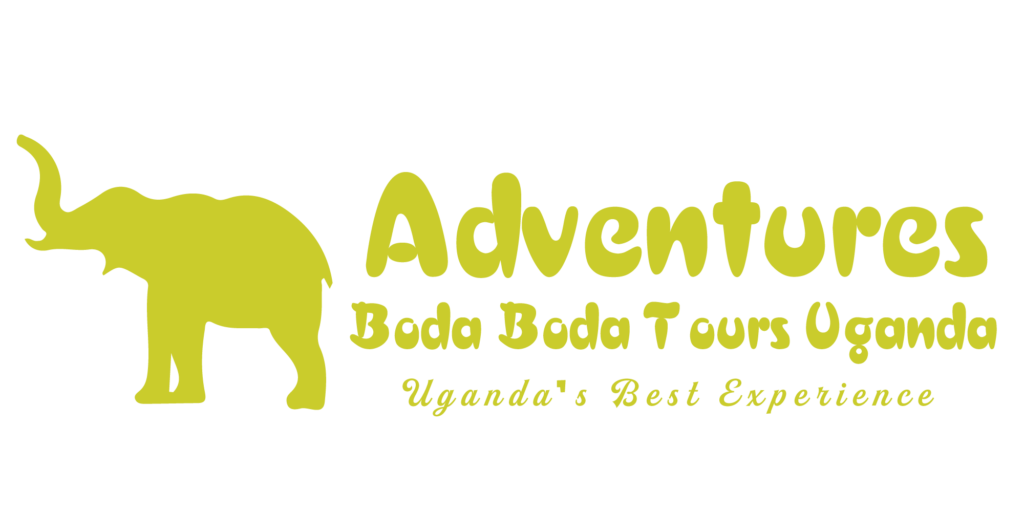Queen Elizabeth National park is undoubtedly one of Uganda’s famous game viewing destination and is part of one of the largest protected areas in East Africa. It is located in the western Part of Uganda. The Park lies within the Western Rift Valley escarpment which forms part of the eastern border of the park, the East African developing divergent plate boundary that formed in the Miocene Period about 25 million years ago.
Queen Elizabeth National park’s diverse eco systems include the sprawling savannah, shady, humid forests, and sparkling lakes for classic big game with over 95 large mammal species with approximately 5,000 hippos, 2,500 elephants and 10,000 buffalo. With Big cats there is also plenty to appreciate, Lions are found throughout the park (with the lion research programme providing great access in the Mweya Peninsula area), and the southern Ishasha sector is home to tree-climbing lions. There are also leopard, civet, genet and Cerval present. These are all much more elusive, many nocturnal, which makes a sighting all the more special. Other frequently seen herbivores are warthog, waterbuck, Ugandan kob, topi and the sitatunga antelope of the wetlands around Lake George. The combination of big cats alongside classic big game is part of what makes Queen Elizabeth National Park such a wonderful safari destination. These animals appear before backdrops of immense beauty; the stunning landscapes the perfect theatre for a unique safari experience. All these will give you great sightings in multiple locations. Photo opportunities will be numerous, but so will the chance to just sit and observe these very special animals in their natural habitat.
Ten primate species including chimpanzees found in the hidden forests of Kyambura and the expanse of Maramagambo, and the olive baboons and worth looking out for are the supporting cast of black and white colobus, red colobus, red-tailed monkey, L’Hoest’s monkey, blue monkey, grey-cheeked crested Mangabeys (Uganda’s only indigenous primate) and the vervet monkey.
There are over 600 species of birds waiting to be spotted and recorded. While the famous species like the Shoebill stork, pelican and flamingo grab the attention with varied habitats including the grassland, woodland, moist tropical forest and wetlands, both freshwater rivers and lakes and saline lakes. Of this almost 40,000 hectares is covered by medium-altitude semi-deciduous forest.
The park boarders Uganda’s Kibale National park and is an extension of Congo’s Parc National des Virunga forming the Greater Virunga Landscape With the foothills of the Rwenzori Mountains as a backdrop on a clear day, Queen Elizabeth National park is made up of the grasslands of the Mweya Peninsula and Ishasha, the crater lakes, the forests of Maramagambo and Kyambura, the great shimmering stretch of the Kazinga Channel.
Queen Elizabeth National Park is a 1,978 square kilometer UNESCO Biosphere Reserve, an area of global scientific importance that recognizes and balances the needs of long-standing human communities and wildlife populations, seeking to achieve sustainable ways to manage and protect the local environment.
The Park is roughly split north to south by the 32 kilometer long Kazinga Channel that connects Lake Edward to Lake George. Eruptions in the mid-Pleistocene formed crater lakes which now provide another distinct landscape in the north and north-east of the park. The most famous of these lakes, Katwe, has extensive salt deposits which have been mined for centuries. The Katwe explosion craters are the Park’s highest point at 1,350 metres above sea level; Lake Edward, at 910 metres, is the lowest point.
When to Visit Queen Elizabeth National Park
Queen Elizabeth National Park is open all year round, but Wildlife viewing is at its best when it is generally drier from June to early October and again in December through to early March where animals are concentrated near rivers and water homes. . Higher rainfall is normally experienced in October and November and March through to the end of May. The heaviest rainfall occurring in April, traditionally May as well, but this has been relatively dry in recent years. Note that some roads become impassable during the heavy rain.
Tourist activities in queen Elizabeth National park
Game drives and wildlife viewing
Early morning or evenings are the best times to go game viewing mainly because the sun is not as hot as the afternoon and the cats prefer to hunt during these Periods. Game drives in queen Elizabeth National park happen mainly in the Kasenyi area, which has the largest kob mating ground. The area is famous for big cats because of the high population of Uganda kobs which they Prey on. Look out for herds of buffaloes and elephants as they graze through the savannah.
Queen Elizabeth National park is one of the parks in Uganda with lots of animals that you will see in the wild when you visit. The park has over 90 species of mammals, with over 300 hippos, 400 elephants and 10,000 buffaloes as well as warthogs, waterbuck, Uganda kob, Topi, antelopes and the rare semi-aquatic Sitatungas, antelopes can be encountered while on your game drive.
Birding
Most travellers visit queen Elizabeth National park to enjoy the best birding destination in Uganda. With over 600 bird species including water birds, woodland and forest dwellers in Maramagambo forest, 54 raptors and various migratory birds. Some of the bird species include the martial eagle, Black-rumpled Button-quail, African skimmer, Chapin’s flycatcher, pink-backed pelican, African broadbill, verreaux’s eagle owl, Black-bee eater, White-tailed lark ,white-winged warbler, papyrus gonolek, corncake, lesser and greater flamingos, shoe bill, bar-tailed Godwit among others.
Tree climbing lions at Ishasha sector of queen Elizabeth National park.
Ishasha sector is found in the south western part of queen Elizabeth National park 2 hours away from the Mweya peninsular. It is one of the most visited parts of queen Elizabeth National park best known for the Tree climbing lions that are found in the area.
It is not common scene to witness a lion climbing a tree everyday but queen Elizabeth National park has a number of 50 climbing lions but the number can either increase or reduce due to different factors.
The lions can be seen lazily resting in the trees after hunting or when they are looking out for their prey. No one knows the real reason as to why the lions climb the trees although there are theories that say that it’s best way for them to spot their prey. All you need to know is that they always seem to be extremely comfortable while lying in the trees. The giant cats can be seen all year around.
Chimpanzee tracking in Kyambura gorge of queen Elizabeth National park.
Chimpanzee tracking in Kyambura gorge is one of the most popular tourist activities for tourists visiting queen Elizabeth National park. The stunning Kyambura gorge is known as The Valley of Apes located in the Far Northern part of the park, it is home to chimpanzees. The chimpanzees in the area are familiar with the existence of humans around which does not prevent them from continuing with their daily activities.
Hiking and nature walks in queen Elizabeth National park.
Nature walks are one of the more active ways to explore the landscapes and wildlife of queen Elizabeth National park. The park has got a variety of walking and hiking trails in Maramagambo forest, Kyambura gorge, along the Ishasha River, along the explosive crater lakes, along Mweya peninsular. The hiking and nature walks offer opportunities for viewing primates, animal species, bird species, butterfly species and many more. These can take between 1-6 hours with guides allocated to you.
Mongoose tracking in queen Elizabeth National park.
One of the little known about activities in queen Elizabeth National park is Mongoose research Tracking on the Mweya peninsula. This is a 3 hour activity that can be done with a guide who accompanies you as you set off to the mongoose research area where you can observe the abandoned mongoose and learn about their habits and ways.
Mweya peninsular in queen Elizabeth National park
This is queen Elizabeth National park’s focal point. It is still ram- packed with birds and animals. Its elevated position commands gorgeous views of Kazinga channel and the distant grasslands seem to merge into the lakes stretching beyond the surrounding savannah and its proximity to Kasenyi plains make it an ideal departure point for wildlife game drives in the morning and evening. The views are epic as
Boat safari at Kazinga channel in queen Elizabeth National park.
The Kazinga channel is a 32 kilometre long fresh water channel that links lake Edward to lake George. The wide channel is a key feature of queen Elizabeth National park and a popular area for wildlife tourism. kazinga channel is home to a wide range of animals and birds including one of the world’s largest concentration of hippos and countless Nile crocodiles. You can expect to see elephants, buffaloes and over 100species of water bird, including of African skimmer.
Kazinga channel provides travellers with a fantastic game and bird watching experience. It is an oasis for many of the fascinating species that inhabit the park. Taking a boat tour along kazinga channel gives visitors the chance to cruise just meters from hundreds of enormous hippos and buffaloes while elephants linger in the shoreline.
Maramagambo forest in Queen Elizabeth National Park.
If you are interested in nature walks and hiking. Maramagambo is the spot to visit. The forest is bordered by Lake Nyamusigiri and lake Kyasanduka a habitat for primates which among others are chimpanzees, plenty of monkey species like the black and white colobus, red-tailed vervet and the l’hoest monkey. Bird watchers are in for a delight as there are over 250 bird species within the forest.
Kalinzu forest reserve in queen Elizabeth National park.
Kalinzu forest reserve is 45 minutes’ drive from queen Elizabeth National park and is one of the best spots to track chimpanzees. There are about 300 chimpanzees among which 40 individuals are habituated by the Japanese researchers. There are also other 6 primates like the blue monkeys, l’hoest monkeys, bush babies, Gallegos among others.
Katwe explosive crater driver around queen Elizabeth National park.
For the geological lovers, watch what volcanic activity created along the Albertine Rift Valley along 27 kilometre drive between the kabatoro gate and queen’s pavilion. Take in the sight of Lake Katwe salt workers along Lake Katwe salt tour. Learning more about salt mining by the local community.
Where to stay in queen Elizabeth National park
Queen Elizabeth National park has great accommodation facilities suitable for all kinds of tourists from budget tourists to high end tourists and they include; Mweya safari lodge, jacana safari lodge, Ishasha wilderness camp, Kyambura Gorge lodge, Simba safari camp among others.
How to get to queen Elizabeth National park
By Road
Accessing the park directly from Kampala is on tarmac through Mbarara (420 kames) or Fort Portal via Kasese (410kms). The park is 6-7 hours from Kampala on surface road via Mbarara.
By air
Queen Elizabeth National park can be reached by domestic Flights air from either Entebbe international airport or Kajjansi airfield with the closed airfields to Queen Elizabeth National park Kasese, Mweya and Ishasha airfield and the flight time is between an hour or Two


